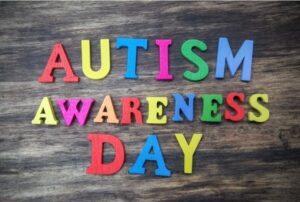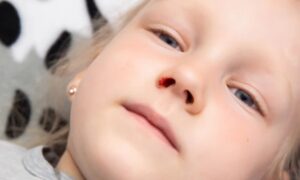Many parents find that when their child has a stuffy nose, feeding becomes unusually difficult. A baby’s nasal congestion can make it hard for them to feed and breathe properly, leading to discomfort and frustration. Especially for infants, nasal congestion can make the feeding process more challenging. So, what to do if nasal congestion affects your baby’s feeding? How can parents help their babies feed smoothly while relieving nasal congestion? In this article, we will explore some common infant nasal congestion relief methods, helping parents tackle the challenges posed by a stuffy nose.
Why Does Nasal Congestion Affect Feeding in Babies?
For infants, feeding is not only an essential way to get nutrition, but it’s also a source of comfort. When a baby’s nose is blocked, they may feel unable to breathe properly, making it difficult to feed, and they may even become fussy. This issue is particularly common during a cold, allergies, or weather changes. Nasal congestion can also cause the baby to frequently pull away from the breast or bottle because they need to stop to breathe.
Causes of nasal congestion in babies can vary, including colds, allergic rhinitis, dry air, or structural issues such as enlarged adenoids. Understanding the cause of the congestion will help parents take the right steps to relieve it.
How to Help Your Baby Feed Smoothly? Tips for Relieving Nasal Congestion
Fortunately, there are several ways to relieve nasal congestion and help your baby feed without difficulty. Here are some common infant nasal congestion relief methods you can try:
- Use Saline Nasal DropsSaline nasal drops are one of the most common methods for relieving baby nasal congestion. They help clear mucus from your baby’s nasal passages, allowing for better airflow and reducing congestion. When using saline drops, tilt your baby’s head slightly, administer the drops, and wait a few minutes before using a nasal aspirator to remove the mucus.
- Use a Nasal Aspirator to Clear the Nasal PassagesFor infants, it’s very hard to clear their own nasal mucus. Parents can use a nasal aspirator to gently remove the mucus from the baby’s nose, helping to restore normal breathing. The aspirator should be used gently to avoid causing any discomfort or damage.
- Adjust the Feeding PositionSince babies with nasal congestion may have trouble breathing, feeding can become difficult. Try changing the feeding position so the baby’s head is slightly elevated, making it easier for them to suckle and breathe at the same time. You may also want to feed the baby in stages, giving them breaks to breathe in between.
- Use a HumidifierDry air can make your baby’s nasal passages even more congested. Using a humidifier in the room can help keep the air moist, alleviating the baby’s nasal congestion. Ensure that the humidity levels are within a safe range to avoid any other issues.
- Keep the Baby’s Environment CleanNasal congestion can also be caused by allergies, so maintaining a clean environment is crucial. Regularly clean your baby’s bedding, toys, and other items to prevent dust and allergens from accumulating.
- Avoid Overdressing and Overheated EnvironmentsBabies may develop a runny nose in warm environments, which could worsen nasal congestion. Ensure that your baby is dressed appropriately and that the room temperature isn’t too high, which could make congestion worse.
Should You Use Medication to Relieve Your Baby’s Nasal Congestion? What You Need to Know
In some cases, parents may consider using medications to relieve nasal congestion in their babies. Common medications include nasal sprays, antihistamines, and nasal drops. However, when using medications, parents should keep the following in mind:
- Avoid adult nasal medications: Adult nasal medications may contain ingredients that are unsafe for babies, especially decongestants. Always be cautious when considering medications for infants.
- Consult a doctor: Before using any medication, it’s best to consult your pediatrician to ensure that the chosen medication is safe and effective.
- Choose baby-safe medications: Many brands offer nasal relief medications specifically designed for infants, which are safer and more effective for babies.
Conclusion: Effective Methods to Relieve Baby Nasal Congestion and Ensure Smooth Feeding
In conclusion, when nasal congestion affects feeding in babies, there are multiple ways to relieve the symptoms and ensure that your baby can feed smoothly. Methods like saline nasal drops, nasal aspirators, adjusting the feeding position, and using a humidifier can all help your baby breathe easily and feed properly. Keeping your baby’s environment clean and comfortable is also essential for preventing congestion from recurring.
In any case, parents should prioritize natural, non-invasive relief methods. If the nasal congestion persists or is accompanied by other severe symptoms, it’s always best to consult your pediatrician.
References:
- WebMD. (2023). "How to Treat Nasal Congestion in Babies". www.webmd.com
- Mayo Clinic. (2023). "Congestion in Infants: What Parents Should Know". www.mayoclinic.org
- American Academy of Pediatrics. (2023). "Infant Nasal Congestion: Causes and Treatments". www.aap.org
- National Health Service (NHS). (2023). "Managing Nasal Congestion in Babies". www.nhs.uk













